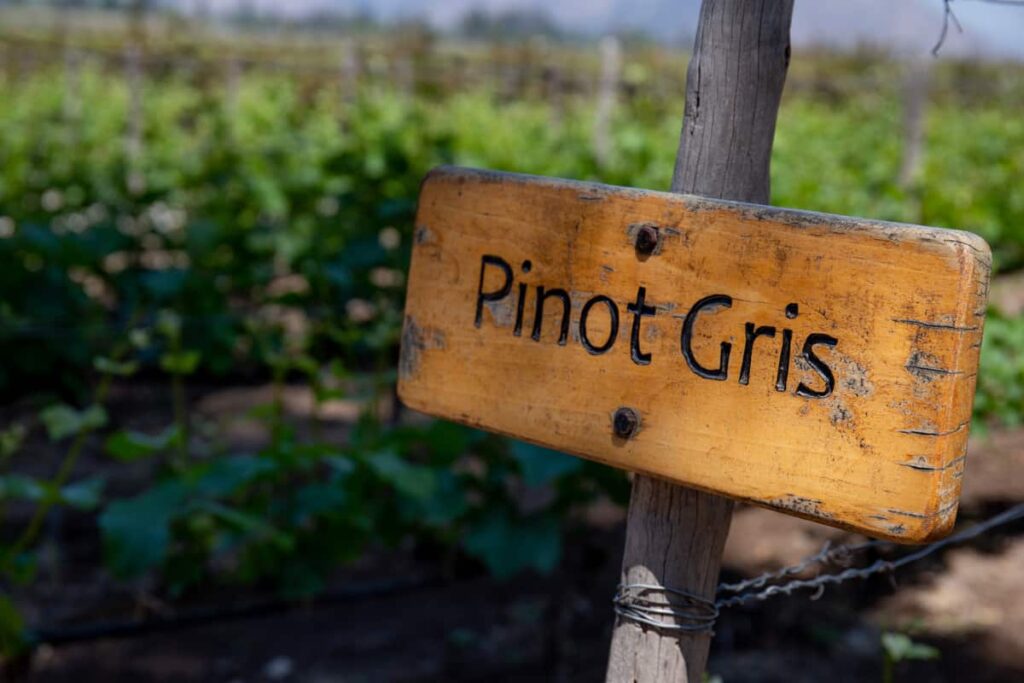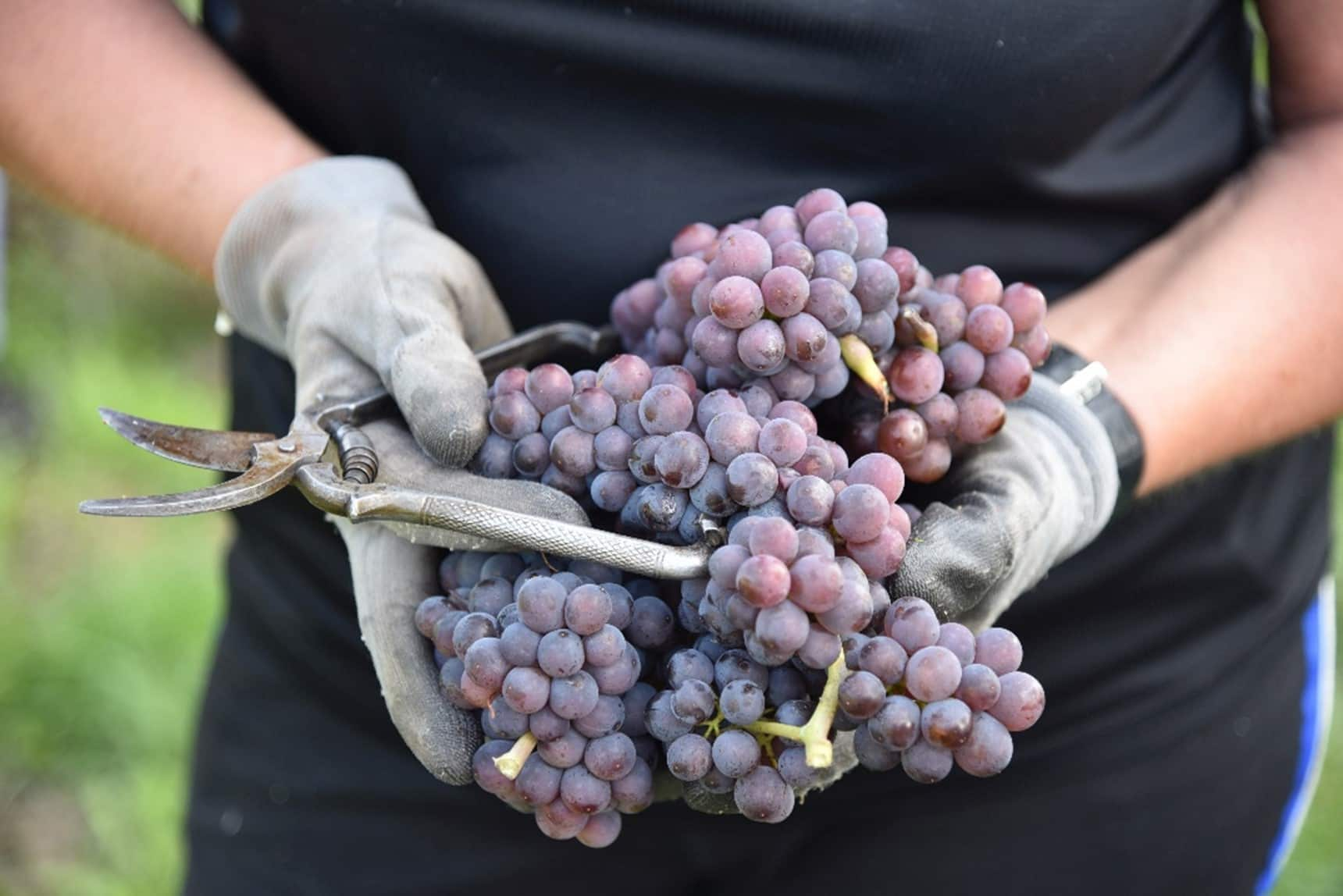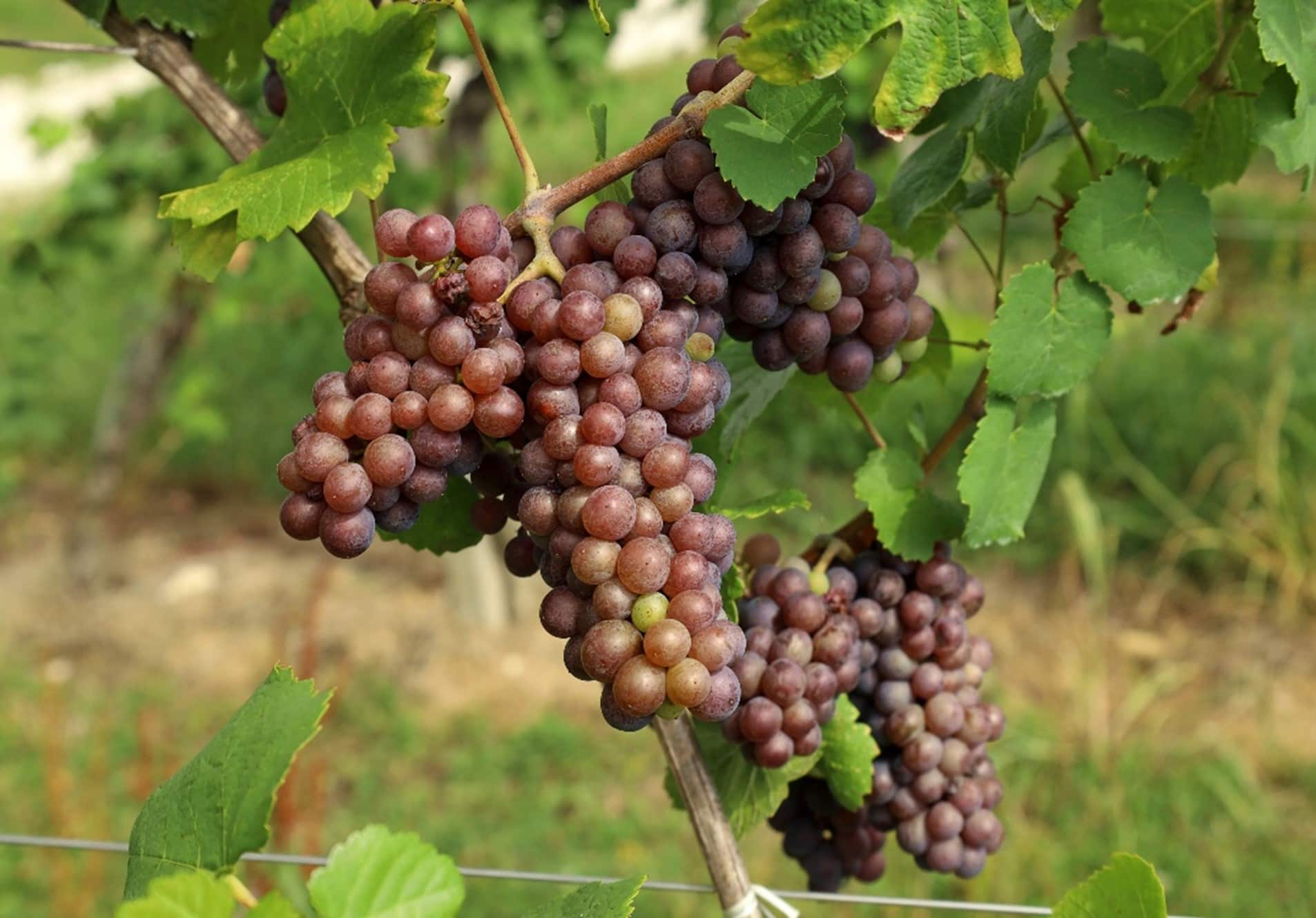
What should you look out for in Pinot Gris? | Common tasting characteristics of Pinot Gris and Pinot Grigio

Pinot Gris is a true chameleon: it can produce light and fashionable wine in northern Italy (where it is known as Pinot Grigio) and smoky, voluptuous whites in French vineyards. The differences lie in terroir, viticulture, and winemaking; the most full-bodied wines tend to emanate from the Alsace region, although there are some brilliant examples made in Alto Adige (Italy) and Friuli-Venezia Giulia close to the Slovenian border. Meanwhile, the refreshing whites of Val Venosta are often very light and quaffable – a perfect aperitif all year round.
This guide will explore the key tasting notes of a Pinot Gris or Pinot Grigio wine, and what buyers should look for.
Click on a link to jump to that section:
What kind of wine is Pinot Gris?
Pinot Gris is widely believed to be indigenous to the vineyards of central-eastern France, and subsequently exported to Alsace, Champagne, Germany, Hungary, and northern Italy. It is an ancient mutation of the Pinot Noir grape, which gives it a distinctive skin colour – a pink-greyish hue – that derives from the unusually high anthocyanin levels in the berry skins. By the Middle Ages, Pinot Gris was well-established on the slopes of the Cote d’Or, cultivated by the increasingly influential Cistercian monks.

Few grapes can encompass such a broad spectrum of weight and flavour profiles, including bone-dry Pinot Grigio from Italy’s Veneto region, late-harvest dessert wines made in Alsace, and very dense, spicy concoctions produced in Central Otago. Cool-climate areas will reveal a pronounced bouquet of citrus, apple, and peach. The ripest expressions often showcase apricot, tropical fruit, and wood smoke flavours. In the Grand Cru terroirs of Alsace, the grape astonishes with its deep complexity and an almost oily, unctuous richness in warmer years.
Pinot Gris by region
France
In the early 1800s, Pinot Gris was cultivated in regions as diverse as Champagne, Burgundy, and the Loire Valley. However, after the advent of phylloxera (a destructive louse accidentally imported from the US), it was not widely replanted in those areas, largely due to concerns over the grape’s unreliable yield. Yet it established a firm stronghold in the vineyards of Alsace, where it continues to produce some of France’s best white wines.
It is one of four grapes – Riesling, Pinot Gris, Muscat and Gewurztraminer – used in the Alsace Grand Cru designation, an appellation reserved for the finest terroirs. Due to the long dry summers of the region, Alsatian Pinot Gris is typically a full-bodied, aromatically expressive wine, rich in fruit and texture. The best examples can improve in bottle for over a decade, gaining depth and complexity as they age into a spicy, golden-hued maturity. A late-harvest Pinot Gris is a magnificent concoction of fruit, alcohol, and acid – exotically scented, rich, yet perfectly balanced.
Italy
Italian Pinot Grigio has long been incredibly popular in the UK due to its upfront fruit and fresh acidity. The heartland of production is northeastern Italy, particularly the regions of Veneto, Friuli-Venezia Giulia, and Alto Adige. This type of Pinot Grigio is a light, straightforward, and fruity wine for immediate consumption – easy to enjoy and a perfect white on a summer’s evening.
Yet it would be unfair to claim that all Italian Pinot Grigio is simple and uncomplicated. Higher vineyards, often steep and terraced on the slopes of the Adige Valley, can showcase the best of the variety; diurnal temperature variation helps to preserve acidity in the wines as the berries ripen. The result is an Italian white that simultaneously merges concentration with freshness – complex and lively. Likewise, the delicious and characterful Pinot Grigios of Friuli-Venezia deserve to be better known. Producers in Colli Orientali and Collio DOC have enjoyed much success with the grape, as have their counterparts in Isonzo.
Australia
Adelaide Hills was the first region in Australia to produce crisp, refreshing, and gooseberry-scented white wines. Indeed, aromatic varieties (such as Pinot Gris) do very well in the cool-climate vineyards of South Australia, where spring frosts and chilly summer evenings are not uncommon.
Nonetheless, local interpretations of the Pinot Gris grape vary significantly, from relatively light whites to very unctuous and exotically flavoured beauties. The dominant local character, however, is brisk acidity. Meanwhile, growers in the Mornington Peninsula (Victoria) are also adept at handling this grape, producing very elegant styles imbued with a crystalline structure and very pure, fine acidity. The same could be said for their competitors in Tasmania and the beautiful vineyards of Margaret River in Western Australia.
The USA
Winemakers in the US West Coast are very fond of Pinot Gris – the acreage planted in Oregon has expanded considerably over the past 15 years. Its southern neighbour, California, also boasts over 6000 hectares of this magnificent grape, and is the third most planted white variety in Washington State.
In these generally warm and dry climates, the acidity is noticeably quite low in many cases. However, there is plenty of rich fruit and pungent aromatics to tempt the curious oenophile.
Pinot Gris viticulture & winemaking
Pinot Gris is a high-quality grape that requires top-notch soils – clay-limestone is ideal – and just the right amount of warmth and sunshine. Unfortunately, it is also susceptible to grapevine diseases and bunch rot during inclement weather. However, the biggest challenge when growing Pinot Gris is to balance sugar ripeness against all-important acidity in the berries. In warmer climates, it is advisable to harvest the grapes before acid levels drop to undesirable levels; low-acid Pinot Gris can be very unctuous on the mid-palate and slightly cloying.

Much like Riesling, Pinot Gris is essentially all about fruit expression rather than oak. It certainly does not need maturation in new oak to achieve its full potential, and consequently, relatively few winemakers age their Pinot Gris in new barrique. However, it is often fermented in stainless steel, with a deliberate suppression of the secondary malolactic fermentation to preserve freshness. If oak is used at all, it is generally in the form of old casks that imparts no strong flavours.
If you are interested in exploring more white wines, read our white grape variety buyer’s guides here.
How do you choose Pinot Gris wines?
Pinot Gris (or Pinot Grigio) wines can come in various possibilities. It may be a light, aromatic white, or a voluptuous expression of exotic fruit and smoky spiciness. It may be bone-dry, a little sweet or a powerful dessert wine. Ramato is a rosé style made across northern Italy: a brief maceration on the skins yields a very fine, elegant rosé wine infused with the scent of raspberry and sour cherry. It is perfect in summer, and yet can be enjoyed all year round. Like white Pinot Gris, Ramato is best served chilled (around 7°C) with friends and family in tow.
In the vast majority of cases, the grape variety will be advertised on the front label. This includes the finest wines of Alsace, and other excellent wines that are being made worldwide today, particularly in New Zealand, northern Italy and Australia.
If you are interested in buying Pinot Gris or Pinot Grigio, visit one of our many shops or browse online for our range of this white grape variety.
For more information, contact Jeroboams today.
Frequently asked questions
What are the best occasions to enjoy Pinot Gris?
Pinot Gris suits any occasion, including the aperitif moment, Friday night sundowners, and a lavish dinner party. However, it must always be served chilled, as warm wines taste insipid.
What food pairs well with Pinot Gris?
For a gastronomic treat, serve roast veal alongside a mature vintage of Alsatian Grand Cru Pinot Gris. Roast goose is another firm favourite, as is lobster. Dessert wines, meanwhile, are sublime with foie gras or tarte Tatin.
What to read next
How do you choose a Sauvignon Blanc? | A guide to buying white wine




